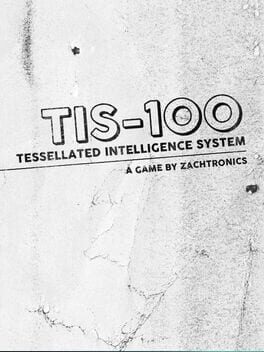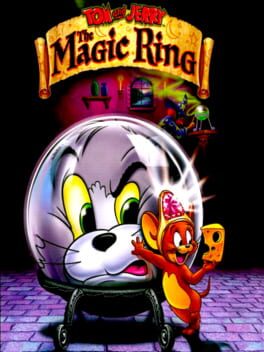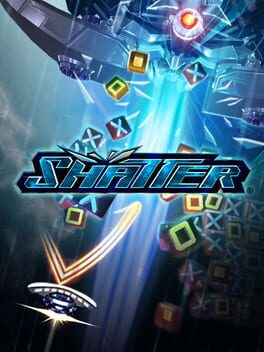122 Reviews liked by Van
Starwhal
2014
One of the greatest 4-player competitive games ever. The frantic gameplay and ridiculous costumes will have you and your friends/family screaming at each other in delight.
I seriously love this game.
Note: This is not a game you should buy for any form of single-player content. This is a party game through and through.
I seriously love this game.
Note: This is not a game you should buy for any form of single-player content. This is a party game through and through.
Spelunker
1983
Spelunker suffers from an abysmal reputation in the community: like all urban legends, it is certainly somewhat exaggerated, but some truth remains. The title is liberally inspired by Lode Runner (1983), if only in the exploration of an underground cavern and the collection of items needed to progress – in this case, keys. Let me quote Cassidy's very informative post (Bad Game Hall of Fame), which I highly recommend reading: Spelunker creator Timothy G. Martin began work on the title after many setbacks in the industry, buffeted by the crash of 1983. The aim would have been to express Martin's love of cave exploration – not unlike Shigeru Miyamoto for The Legend of Zelda... – while taking inspiration from Henry Levin's Journey to the Center of the Earth (1959). The port was supervised by Brøderbund, then commercially in vogue.
The title features the Spelunker, whose goal is to descend into the bowels of the earth to reach a pyramid that is obviously similar to Atlantis. The player must collect keys that open the various doors blocking the way out, while managing their energy, which serves as both a timer and a resource to get rid of the occasional ghosts. What makes Spelunker so special is the unforgiving aspect of its gameplay: the slightest fall is deadly and jumps are easily missed, especially when the character is on a ladder or a rope. Indeed, it is not possible to hook onto an adjacent platform, as the title requires the player jump on it (meaning that a direction has to be pressed). However, it is easy to press a direction for a few frames too long, causing the character to fall off the rope or ladder before a jump, resulting in a wrongful death. It is this ruthlessness that the game is known for: personally, while I found the title unfair, it does not have the worst controls imaginable. It is, however, still horribly rough, and I can only agree with the Bad Game Hall of Fame article: while the development team justified its difficulty by pointing to the need to distance itself from the more generous and friendly Super Mario Bros. (1983) that happened to be released at the same time, Cassidy argues that this is a later explanation, presumably invented to make up for the studio's general incompetence.
I would tend to agree, as there is no justification for Spelunker's punishing mechanics: falls are very easily seen as fatal by the game and the level design does not reflect the claustrophobic feel Martin wanted to create. If the inspiration is indeed Journey to the Center of the Earth, there is none of the diversity of the film's settings, or even its mysteriousness. The sense of danger only comes from the poor controls and never from elements specifically designed to create an immersive tension. Enemies are never a problem – their speed increases marginally as the loops go on, but it doesn't change anything – and items don't create any challenge. Bombs are used to destroy a few rare rocks, while flares are used to get rid of bats, which are never useful anyway – from the fourth loop onwards, they're also used to collect the keys. Unlike a title like Metroid, which has a similar psychological idea, Spelunker never manages to create anxiety through resource management.
The title nevertheless compensates with a rather organic level design, with a good balance between linearity and exploration, for a game of its time. When the player finishes the game the first time, the loops bring additional conditions, notably the keys now being invisible. Such a choice does not encourage a scoring logic, but rather a speedrunning approach and rote learning the location of the keys is indeed quite easy. It is regrettable that the scenery always remains the same. If a few gimmicks punctuate the levels (the lift and the mine car in the first one; the waterfall in the third one, which reminds of the underground ocean of Journey to the Center of the Earth), they remain too rare to be really effective. Spelunker appears to be a contradictory title; rather ahead of its time in some respects, it suffers from amateurish and decidedly poor controls. Perhaps most frustrating are the after-the-fact justifications, which seem rather dishonest – or, if they are true, terribly naive. If it's not the worst game on the NES, as some would like to call it, Spelunker is still a very mediocre title. Incidentally, as Cassidy elaborates, it has had a lasting influence on Japanese video games. There's probably a lesson to be learnt here.
The title features the Spelunker, whose goal is to descend into the bowels of the earth to reach a pyramid that is obviously similar to Atlantis. The player must collect keys that open the various doors blocking the way out, while managing their energy, which serves as both a timer and a resource to get rid of the occasional ghosts. What makes Spelunker so special is the unforgiving aspect of its gameplay: the slightest fall is deadly and jumps are easily missed, especially when the character is on a ladder or a rope. Indeed, it is not possible to hook onto an adjacent platform, as the title requires the player jump on it (meaning that a direction has to be pressed). However, it is easy to press a direction for a few frames too long, causing the character to fall off the rope or ladder before a jump, resulting in a wrongful death. It is this ruthlessness that the game is known for: personally, while I found the title unfair, it does not have the worst controls imaginable. It is, however, still horribly rough, and I can only agree with the Bad Game Hall of Fame article: while the development team justified its difficulty by pointing to the need to distance itself from the more generous and friendly Super Mario Bros. (1983) that happened to be released at the same time, Cassidy argues that this is a later explanation, presumably invented to make up for the studio's general incompetence.
I would tend to agree, as there is no justification for Spelunker's punishing mechanics: falls are very easily seen as fatal by the game and the level design does not reflect the claustrophobic feel Martin wanted to create. If the inspiration is indeed Journey to the Center of the Earth, there is none of the diversity of the film's settings, or even its mysteriousness. The sense of danger only comes from the poor controls and never from elements specifically designed to create an immersive tension. Enemies are never a problem – their speed increases marginally as the loops go on, but it doesn't change anything – and items don't create any challenge. Bombs are used to destroy a few rare rocks, while flares are used to get rid of bats, which are never useful anyway – from the fourth loop onwards, they're also used to collect the keys. Unlike a title like Metroid, which has a similar psychological idea, Spelunker never manages to create anxiety through resource management.
The title nevertheless compensates with a rather organic level design, with a good balance between linearity and exploration, for a game of its time. When the player finishes the game the first time, the loops bring additional conditions, notably the keys now being invisible. Such a choice does not encourage a scoring logic, but rather a speedrunning approach and rote learning the location of the keys is indeed quite easy. It is regrettable that the scenery always remains the same. If a few gimmicks punctuate the levels (the lift and the mine car in the first one; the waterfall in the third one, which reminds of the underground ocean of Journey to the Center of the Earth), they remain too rare to be really effective. Spelunker appears to be a contradictory title; rather ahead of its time in some respects, it suffers from amateurish and decidedly poor controls. Perhaps most frustrating are the after-the-fact justifications, which seem rather dishonest – or, if they are true, terribly naive. If it's not the worst game on the NES, as some would like to call it, Spelunker is still a very mediocre title. Incidentally, as Cassidy elaborates, it has had a lasting influence on Japanese video games. There's probably a lesson to be learnt here.
The genesis of Punch-Out!! for the arcade is documented by the Iwata Asks interview: in essence, it should be remembered that the title was an ambitious technical project, the brainchild of several creators, who would become well-known figures amongst Nintendo: Takeda and Miyamoto. The technical audacity of the original opus is illustrated by the finesse of the animation and the use of two screens, which allow the action to be displayed in large scale. The NES port therefore faces particular difficulties, as the hardware cannot support the technique of the arcade version. In particular, we know that it was the impossibility of making the protagonist transparent that led to the adoption of a very vertical view and a character with a small build.
We thus play as Little Mac, on the road to the world title. Unlike many games of the time, the emphasis is on reflexes and learning patterns. Each opponent has his own range of moves, which can be countered in specific ways. Dodging a hook usually allows the player to unleash jabs, while some opponents require more creativity and more complex imput sequences. This reactive style of gameplay is underlined by the stamina gauge, which allow Little Mac to attack. If he connects a hit, it doesn't go down, but hitting into the guard or taking a blow lowers it, forcing more agile gameplay and pushing back the idea of ill-advised aggressive bursts. The important idea is that it is necessary to observe and learn. The modern video game – in the wake of Souls-like among others – has completely integrated this concept, but the idea was somewhat new in the 1980s. Indeed, communicating the important information clearly enough is a difficult task for the first consoles: in this respect, Punch-Out!! appears to be an archetypal example of what one can do with the NES and why creativity is needed to bypass technical limitations. In addition to the vivid animations, the game offers many audio and visual cues to help the player perfect their timing: enemies may glow briefly or a few elements in the audience help to react at the right moment. Of course, the more the matches progress, the more the game subverts its own grammar: the textbook example is of course the match against Mike Tyson. He doesn't hesitate to change his rhythm to catch the player off guard, forcing them to react rather than to blindly predict. The execution is quite skilful and has a real organic quality. While it is possible to learn the timeline of the various fights, there is always a rather magical adrenaline rush, that mimics well the sensations one can feel on the ring.
The game is not perfect though and suffers from a difficulty curve that some might find a little too extreme towards the end. Memory issues have also led to compromises – first and foremost the music. Finally, the cultural representation of the boxers remains obtuse: Takeda more or less justified himself by stressing that he was thinking above all of what would appeal to the American market. If he can't be completely wrong, we have to admit that certain archetypes are difficult to accept and are based on prejudices that are very badly considered today. Despite these issues, which Nintendo more or less addressed in the following opuses, Punch-Out!! remains a solid technical achievement, perfectly in line with Nintendo's game-design philosophy. It is a title that aims above all at the players' enjoyment, scorning more realistic approaches that would have made the game feel heavier and unpleasant; the port follows the same logic, since it chooses to modify some elements to use the NES hardware as efficiently as possible. Punch-Out remains thus a historical title that can still be enjoyed today.
We thus play as Little Mac, on the road to the world title. Unlike many games of the time, the emphasis is on reflexes and learning patterns. Each opponent has his own range of moves, which can be countered in specific ways. Dodging a hook usually allows the player to unleash jabs, while some opponents require more creativity and more complex imput sequences. This reactive style of gameplay is underlined by the stamina gauge, which allow Little Mac to attack. If he connects a hit, it doesn't go down, but hitting into the guard or taking a blow lowers it, forcing more agile gameplay and pushing back the idea of ill-advised aggressive bursts. The important idea is that it is necessary to observe and learn. The modern video game – in the wake of Souls-like among others – has completely integrated this concept, but the idea was somewhat new in the 1980s. Indeed, communicating the important information clearly enough is a difficult task for the first consoles: in this respect, Punch-Out!! appears to be an archetypal example of what one can do with the NES and why creativity is needed to bypass technical limitations. In addition to the vivid animations, the game offers many audio and visual cues to help the player perfect their timing: enemies may glow briefly or a few elements in the audience help to react at the right moment. Of course, the more the matches progress, the more the game subverts its own grammar: the textbook example is of course the match against Mike Tyson. He doesn't hesitate to change his rhythm to catch the player off guard, forcing them to react rather than to blindly predict. The execution is quite skilful and has a real organic quality. While it is possible to learn the timeline of the various fights, there is always a rather magical adrenaline rush, that mimics well the sensations one can feel on the ring.
The game is not perfect though and suffers from a difficulty curve that some might find a little too extreme towards the end. Memory issues have also led to compromises – first and foremost the music. Finally, the cultural representation of the boxers remains obtuse: Takeda more or less justified himself by stressing that he was thinking above all of what would appeal to the American market. If he can't be completely wrong, we have to admit that certain archetypes are difficult to accept and are based on prejudices that are very badly considered today. Despite these issues, which Nintendo more or less addressed in the following opuses, Punch-Out!! remains a solid technical achievement, perfectly in line with Nintendo's game-design philosophy. It is a title that aims above all at the players' enjoyment, scorning more realistic approaches that would have made the game feel heavier and unpleasant; the port follows the same logic, since it chooses to modify some elements to use the NES hardware as efficiently as possible. Punch-Out remains thus a historical title that can still be enjoyed today.
TIS-100
2015
While known for its more applied problem-oriented puzzle games, Zachtronics offers a more abstract experience here, embracing the language of assembly. TIS-100 takes its name from the eponymous computer, whose architecture resembles the devices of the 1980s. The core of the game consists of reading a series of inputs and solving a specific statement, which creates a sequence of outputs. The commands at our disposal are simple operations of moving between nodes and in two registers (the accumulator ACC and the reserve BAK). Being a low-level language, the title allows itself a rather pleasant progression curve: a programmer audience will obviously be at an advantage, but everyone can try the experience. The minimalism of the game is thought-provoking and a certain serious atmosphere emerges from this dryness. The succinctness of the statements and commands available forces one to spend a lot of time on one's notebook, in order to start thinking ahout theoretical approaches. Such a title cannot therefore please everyone, but it has a formidable quality in its progression curve (Sequence Sorter and Sequence Mode Calculator are particularly devious, however): from there, a didactic approach emerges, allowing epiphanies and joys in solving increasingly difficult problems. It is worth mentioning the existence of a narrative framework, which gives context to what the TIS-100 is, without polluting the pace of thought. Ultimately, TIS-100 is a very solid first attempt at pure programming, which SHENZHEN I/O and EXAPUNKS will refine.
And Yet It Moves
2009
In my review of VVVVVV (https://www.backloggd.com/u/RedBackLoggd/review/279124/) I noted pure vertical shifts aren’t intrinsically different from standard jumping in platformers- yes, you’re technically moving in a disparate manner, but those actions ultimately come down to bounding in an up/down motion.
Well, a year before VVVVVV came out, an indie title called And Yet it Moves was released that ironically addressed that observation. See, developed and published by Broken Rules, AYIM is a platformer built on the mechanic of rotation: at the click of a key, you can turn the screen rectilinearly, repositioning environments in ways that allow you to circumvent them. The question is how fun is it? It’s pretty good, though a significant flaw hampers things. For the longer answer, read on!
Before pressing forward, I’m going to put out a disclaimer that the Steam version of the game, despite being listed as having “partial controller support,” is not compliant with such devices. I tried multiple times with my 360 controller to no avail. It's not a big deal since the keyboard works perfect; however, it should be noted to those thinking about beating it with a gamepad of sorts.
Anyway, we'll start with the graphics as AYIM is what I imagine a theoretical amalgamation of Doug and The Amazing World of Gumball would be. Your anonymous character looks like he was drawn by Jim Jinkins, topped with a hairstyle akin to Roger’s, albeit animated as though it belonged in the Fancy Pants Universe. His posture, constant frown, and pencil-drawn figure cry hipster, and he certainly stands as one of the more uniquely-designed protagonists in gaming history. The settings he finds himself in, on the other hand, are paper-mache extravaganzas: wrapping tissue backgrounds adorned with photos seemingly cut out of some cheap designer magazine. These objects, ranging from terrain to arts & crafts, literally have those fuzzy white boundaries you get when you haphazardly tear a thick sheet of parchment, the backdrops they rest on as crinkled as remnants from a post-Christmas gift heap. The first half of the game sticks pretty firmly to primary colors; however, the second half kicks things into psychedelic gear, with bright complexations straight out of an I Spy book. The whole display ends up being very chromatically coruscating, but whether or not it’s pleasing will vary from person-to-person. I personally liked seeing something that diverged from your typical Mario-inspired sprite work, and as an advocate for specialized art focuses, I hope that more games follow the example set by Broken Rules for their project.
The sound, unfortunately, is mostly atrocious. There’s no voice acting, and the SFX is the worst case of foley I have ever heard in a video game. As you’re in jungle and nature-themed environs, there was an attempt to mimic the noises of a forest whilst giving it a musically-tinged motif, and the end product is unpleasant: owl hoots sound like muted French Horn warbles, monkey screeches like a Trumpet imitating Tarzan, and bird chirps like a human tootling. Even out-of-boundary falls rip-off that slide whistle gimmick Doodle Jump overdid years ago. For most of your playthrough, this abysmal sound scheme is intermixed with a vocal percussion rhythm that I assume was meant to evoke a tribal chant but winds up coming across like the type of amateur beatboxing we used to do in middle school. Oh, and did I mention it’s all played on a painfully obvious loop, because apparently crafting a composition for the duration of a single level was too difficult for the maestro.
In the second half, when things take a wacky turn, the score does get better in terms of accentuating the ludicrosity around you via some pretty nice jazz accompaniments. However, the SFX never improves, and in some cases arguably gets worse in Broken Rules' vain quest to be experimental. Footsteps, in particular, are morphed into this grating…you know what, I can’t even describe it. Search videos or play the game yourself to know what I mean.
Despite the title quoting Galileo’s famous proclamation, there’s no story to speak of, meaning we move onto the gameplay. As I said in the intro, your goal is to get from Point A to Point B via manipulating the immediate area- left 90°, right 90°, or a complete 180 flip. Doing so whirls the solid ground about you accordingly, creating passageways or gaps you may not have had access to from your original vantage.
As you can expect, things aren’t completely straightforward. Loose objects will tumble freely, becoming hazardous projectiles or impediments in the process; gravity remains a constant, accelerating your mass to dangerous speeds if you don’t hamper it quickly; and numerous puzzles require accurate screen pivots lest you misaim and sabotage the whole shebang.
There was a lot of potential to this premise and, to their credit, Broken Rules adopts most of it. It would’ve been cool to maybe see boss fights thrown in that would have had to be resolved in a manner akin to Teslagrad’s, but the base game gives a lot of variety in its own right. There were only two things that prevented me from truly enjoying AYIM. The first, which I alluded to early on, is the momentum-mechanic. AYIM can get really frustrating in terms of depicting terminal velocity: that is, the quickness in which G-forces affect your avatar. I genuinely don’t think there was a code in-place to accurately calculate it as, I swear, there were instances where the exact same drop from the exact same circumstances either killed me or landed me to safety. My conspiracy theory is the programming diverges depending on what that particular section calls for -- i.e., if the game wants you to go a certain route, it will speed-up your celerity, and vice-versa if it wants you to rely on pure platforming. A strategic stopgap is technically in place in the way of downward slopes; falling on them, no matter your propulsion, is said to guarantee a safe landing. While I personally found even this to be inconsistent, I have seen walkthroughs on YouTube that showcase gamers successfully utilizing them, so I concede it’s probably user error on my part.
The second issue that crops up is your sideways jumping. There’s this uncanny waywardness in the air that takes place whenever you horizontally saltate, and it honestly messed-up my spatial awareness by making it hard to acutely gauge where I was going to touch down. Now, some may claim that Broken Rules was trying to recreate air resistance. First off, if that was true, then I should never collapse from dropping; secondly, the new gravity should be constant enough that you end up adjusting eventually, and that didn’t happen here because it isn’t stable. Combine this with speed bursts from a gravity tilt and you may find the more-precise platforming to be harder than it needs to be.
Overall though, And Yet It Moves is a chill enough game to get through. With the exception of some post-game bonus levels, the challenge is very fair, and you get an entry in the platforming genre that stands out from the crowd. If you can get past the gameplay flaws and desire a change of pace from your usual jumpers, consider picking it up. Just make sure you plug-in your own music to listen to….
Well, a year before VVVVVV came out, an indie title called And Yet it Moves was released that ironically addressed that observation. See, developed and published by Broken Rules, AYIM is a platformer built on the mechanic of rotation: at the click of a key, you can turn the screen rectilinearly, repositioning environments in ways that allow you to circumvent them. The question is how fun is it? It’s pretty good, though a significant flaw hampers things. For the longer answer, read on!
Before pressing forward, I’m going to put out a disclaimer that the Steam version of the game, despite being listed as having “partial controller support,” is not compliant with such devices. I tried multiple times with my 360 controller to no avail. It's not a big deal since the keyboard works perfect; however, it should be noted to those thinking about beating it with a gamepad of sorts.
Anyway, we'll start with the graphics as AYIM is what I imagine a theoretical amalgamation of Doug and The Amazing World of Gumball would be. Your anonymous character looks like he was drawn by Jim Jinkins, topped with a hairstyle akin to Roger’s, albeit animated as though it belonged in the Fancy Pants Universe. His posture, constant frown, and pencil-drawn figure cry hipster, and he certainly stands as one of the more uniquely-designed protagonists in gaming history. The settings he finds himself in, on the other hand, are paper-mache extravaganzas: wrapping tissue backgrounds adorned with photos seemingly cut out of some cheap designer magazine. These objects, ranging from terrain to arts & crafts, literally have those fuzzy white boundaries you get when you haphazardly tear a thick sheet of parchment, the backdrops they rest on as crinkled as remnants from a post-Christmas gift heap. The first half of the game sticks pretty firmly to primary colors; however, the second half kicks things into psychedelic gear, with bright complexations straight out of an I Spy book. The whole display ends up being very chromatically coruscating, but whether or not it’s pleasing will vary from person-to-person. I personally liked seeing something that diverged from your typical Mario-inspired sprite work, and as an advocate for specialized art focuses, I hope that more games follow the example set by Broken Rules for their project.
The sound, unfortunately, is mostly atrocious. There’s no voice acting, and the SFX is the worst case of foley I have ever heard in a video game. As you’re in jungle and nature-themed environs, there was an attempt to mimic the noises of a forest whilst giving it a musically-tinged motif, and the end product is unpleasant: owl hoots sound like muted French Horn warbles, monkey screeches like a Trumpet imitating Tarzan, and bird chirps like a human tootling. Even out-of-boundary falls rip-off that slide whistle gimmick Doodle Jump overdid years ago. For most of your playthrough, this abysmal sound scheme is intermixed with a vocal percussion rhythm that I assume was meant to evoke a tribal chant but winds up coming across like the type of amateur beatboxing we used to do in middle school. Oh, and did I mention it’s all played on a painfully obvious loop, because apparently crafting a composition for the duration of a single level was too difficult for the maestro.
In the second half, when things take a wacky turn, the score does get better in terms of accentuating the ludicrosity around you via some pretty nice jazz accompaniments. However, the SFX never improves, and in some cases arguably gets worse in Broken Rules' vain quest to be experimental. Footsteps, in particular, are morphed into this grating…you know what, I can’t even describe it. Search videos or play the game yourself to know what I mean.
Despite the title quoting Galileo’s famous proclamation, there’s no story to speak of, meaning we move onto the gameplay. As I said in the intro, your goal is to get from Point A to Point B via manipulating the immediate area- left 90°, right 90°, or a complete 180 flip. Doing so whirls the solid ground about you accordingly, creating passageways or gaps you may not have had access to from your original vantage.
As you can expect, things aren’t completely straightforward. Loose objects will tumble freely, becoming hazardous projectiles or impediments in the process; gravity remains a constant, accelerating your mass to dangerous speeds if you don’t hamper it quickly; and numerous puzzles require accurate screen pivots lest you misaim and sabotage the whole shebang.
There was a lot of potential to this premise and, to their credit, Broken Rules adopts most of it. It would’ve been cool to maybe see boss fights thrown in that would have had to be resolved in a manner akin to Teslagrad’s, but the base game gives a lot of variety in its own right. There were only two things that prevented me from truly enjoying AYIM. The first, which I alluded to early on, is the momentum-mechanic. AYIM can get really frustrating in terms of depicting terminal velocity: that is, the quickness in which G-forces affect your avatar. I genuinely don’t think there was a code in-place to accurately calculate it as, I swear, there were instances where the exact same drop from the exact same circumstances either killed me or landed me to safety. My conspiracy theory is the programming diverges depending on what that particular section calls for -- i.e., if the game wants you to go a certain route, it will speed-up your celerity, and vice-versa if it wants you to rely on pure platforming. A strategic stopgap is technically in place in the way of downward slopes; falling on them, no matter your propulsion, is said to guarantee a safe landing. While I personally found even this to be inconsistent, I have seen walkthroughs on YouTube that showcase gamers successfully utilizing them, so I concede it’s probably user error on my part.
The second issue that crops up is your sideways jumping. There’s this uncanny waywardness in the air that takes place whenever you horizontally saltate, and it honestly messed-up my spatial awareness by making it hard to acutely gauge where I was going to touch down. Now, some may claim that Broken Rules was trying to recreate air resistance. First off, if that was true, then I should never collapse from dropping; secondly, the new gravity should be constant enough that you end up adjusting eventually, and that didn’t happen here because it isn’t stable. Combine this with speed bursts from a gravity tilt and you may find the more-precise platforming to be harder than it needs to be.
Overall though, And Yet It Moves is a chill enough game to get through. With the exception of some post-game bonus levels, the challenge is very fair, and you get an entry in the platforming genre that stands out from the crowd. If you can get past the gameplay flaws and desire a change of pace from your usual jumpers, consider picking it up. Just make sure you plug-in your own music to listen to….
I've been obsessed with the soundtrack for this game for a long time. It's so haphazardly manic, ambitious, barely related to the gameplay tone wise outside of being "energetic", in a broad sense. Some of the melodies go so overboard on the chiptune prog, it's awesome. Same composer as Urban Yeti^, another eclectic work of tech music genius, fitting for perhaps the only avant-garde GBA game in existence (one of very few in the general console space). Tom & Jerry: The Magic Ring on the other hand is a fairly average, unfortunately licensed, just ever so slightly tweaked out, belt-scrolling beat-em-up, which only makes its auditory audacity stand out even more. Time signatures, who needs 'em.
^oh, and of course the score for the beloved Spider-Man 2 by Treyarch. Randy Wilson, highly underrated... guy.
^oh, and of course the score for the beloved Spider-Man 2 by Treyarch. Randy Wilson, highly underrated... guy.
Shatter
2009
The Tearoom
2017
i will never stop giving robert yang games 5* reviews, this i promise.
honestly tho 'sex game made partly to fuck with Twitch's community guidelines that turns into moving and sad exploration of institutional homophobia' is really something so special it demands 5 stars. what an amazing piece of work!!!
honestly tho 'sex game made partly to fuck with Twitch's community guidelines that turns into moving and sad exploration of institutional homophobia' is really something so special it demands 5 stars. what an amazing piece of work!!!
Neon White
2022
its called pastiche you dipshits and it rocks
honestly this game is basically perfect, surf maps sega dreamcast sonic adventure gun game good sound design good platforming good leaderboards good skips good everything. adore it!
also here's my spiciest take: if you dont like the writing in this but you do like the writing in hades then you need to get better at having fun because they are The Same, but this one is more joyous
honestly this game is basically perfect, surf maps sega dreamcast sonic adventure gun game good sound design good platforming good leaderboards good skips good everything. adore it!
also here's my spiciest take: if you dont like the writing in this but you do like the writing in hades then you need to get better at having fun because they are The Same, but this one is more joyous
Far Cry 4
2014
theres two kinds of reactions to this game; ones where its like "wow so spooky, what a smart takedown of the dating sim genre!" and ones where it's like "i played 5000000000000 dating sims last month and this is ignorant bullshit by philistines." unlike all of them i am a perfect genius who understands that this is a 3 star game with some fun spooks and scares which does a good job at being a meme. and that's fine.














